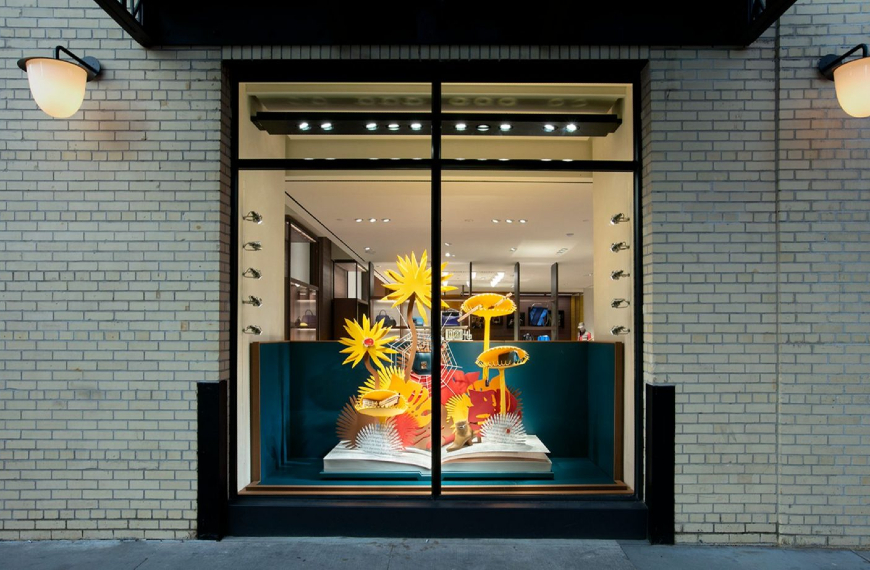Windows are one of the most invaluable aspects of visual merchandising and they aren’t only important in big cities like New York. They are usually the first thing potential customers see when they walk by a retail store, and if your windows are captivating enough, you might draw in new customers from across the street or even driving by.
Creating a great window display is about thinking outside the box and using your imagination. You only have a couple of seconds to capture the attention of a passing shopper, so don’t be afraid to be bold.

The overall store layout can make or break whether or not a purchase will be made, so you want to ensure customers can see products in a straightforward and eye catching way. Shoppers should be able to easily maneuver your displays and create zones related to your brand’s merchandise.

Signs are what will direct your customers through your store, and this starts from your main entry sign down to your price tags and everything in between.
Cohesive signage is a simple visual merchandising tool that can help your customers find what they need, which will help to increase sales. Clear signage will make a retail space easier to navigate and look more professional.
Hang tags on clothing, price tags, sale signs, and seasonal signage are all types of signage you might consider in your store. If you want your visual merchandising to look refined, all of these should look consistent.
Creating a cohesive color scheme is necessary for visual merchandising. Colors can be used to subconsciously influence the way customers feel about your store and products. Choosing the right colors will help you to set the tone for your customer’s experience and make a lasting impression.

If you sell fashion, jewelry, or other items worn by a person, you might want to use mannequins in your store displays. Mannequins are a great way to highlight products and create seasonal displays.
There are many types of mannequin forms, so choose the ones that will look the best in your retail store and display your products the best.

The cash wrap is the point of sale where your customers make their purchases, so make sure it is visually appealing. Design your cash wrap to seamlessly fit in with the rest of your store, while still standing out.
Consider using the counter and sides of the cash wrap for small items that customers might purchase at the last moment.
It’s also necessary to remember that this is where money will be exchanged and stored, so safety features, such as a locked drawer for the cash, are critical.
Store lighting is critical to setting the right design tone, but it also functions to highlight products in a specific way. The type of products you sell will help to dictate what kind of store lighting you need. For example, jewelry stores typically use accent lighting to highlight their products in the best way possible.
Updating displays throughout the year will encourage your customers to drop in and see how your store has changed. This could be as simple as adding some greenery for spring or could include elaborate pop-up displays.

In recent years, technology has become an impactful part of visual merchandising. Using large TVs or screens as part of your store displays can help to showcase products in a new and innovative way and add new dimensions to your customer’s shopping experience.
You can also use tablets to show customers additional product information or help them make a purchase that will deliver directly to their homes.

A visual merchandiser (or VM for short) is a person who is responsible for maintaining the visual displays for a brand. Some companies have in-house visual merchandising teams, and some use freelance merchandisers.
The typical role of a visual merchandiser will be to help change out the windows, change out the seasonal merchandise on the floor, dress mannequins, and highlight products that the brand wants to promote. A VM needs to understand the target customer and create ideal displays to attract shoppers, which converts sales.


Visual merchandising is a critical aspect of retail business and one that should not be overlooked.
It’s all about creating an inviting and memorable space that makes customers want to purchase your products and come back again and again. Today, you can buy anything online, but if you offer customers a unique shopping experience they will still want to be repeat customers in person.
By following these tips, you can start to create visual displays that will help increase sales and represent your brand in the best light possible. Please reach out if you have any questions or need help getting started!
